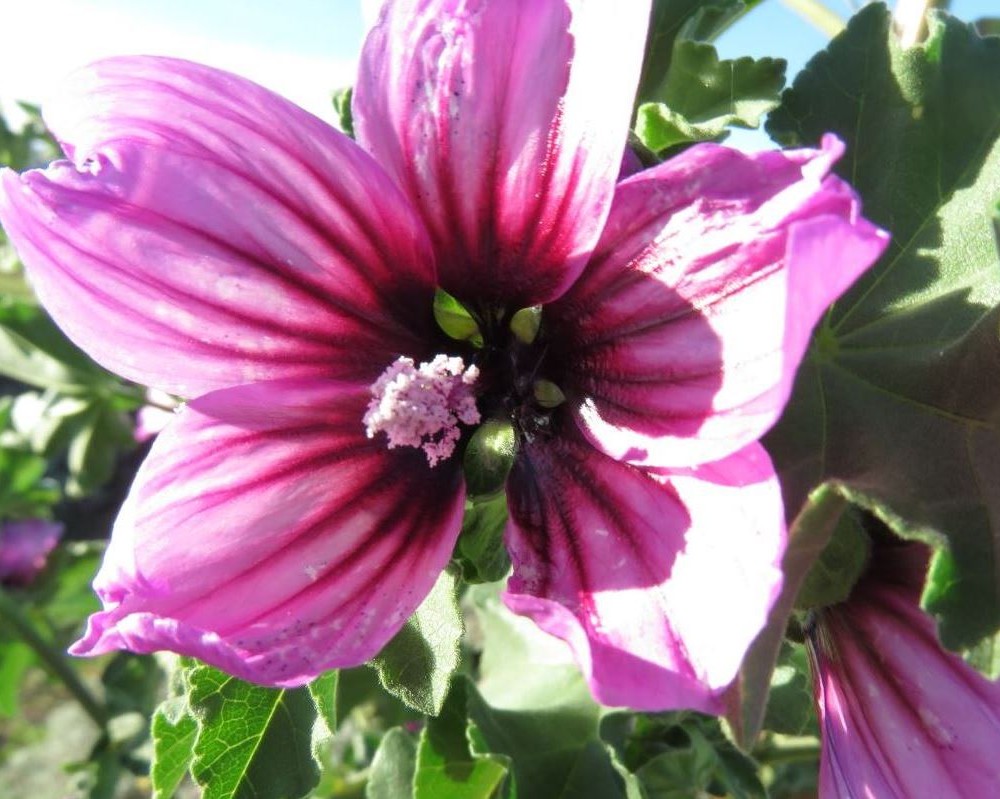Tree mallow
(Talipariti pernambucense)

Description
Malva arborea (also known as Lavatera arborea, or, more recently as Malva eriocalyx), the tree mallow, is a species of mallow native to the coasts of western Europe and the Mediterranean region, from Ireland and Britain south to Algeria and Libya, and east to Greece. It is a shrubby annual, biennial or perennial plant growing to 0.5–2 m (rarely 3 m) tall. The leaves are orbicular, 8–18 cm diameter, palmately lobed with five to nine lobes, and a coarsely serrated margin. The flowers are 3–4 cm diameter, dark pink to purple and grow in fasciculate axillary clusters of two to seven. It grows mainly on exposed coastal locations, often on small islands, only rarely any distance inland. Malva arborea tolerates sea water to varying degrees, at up to 100% sea water in its natural habitat, excreting salt through glands on its leaves.This salt tolerance can be a competitive advantage over inland plant species in coastal areas. Its level of salinity tolerance is thought to be improved by soil with higher phosphate content, making guano enrichment particularly beneficial. Malva is a genus of herbaceous annual, biennial, and perennial plants in the family Malvaceae. It is one of several closely related genera in the family to bear the common English name mallow. The genus is widespread throughout the temperate, subtropical and tropical regions of Africa, Asia and Europe. The leaves are alternate, palmately lobed. The flowers are from 0.5–5 cm diameter, with five pink, lilac, purple or white petals.
Taxonomic tree:







